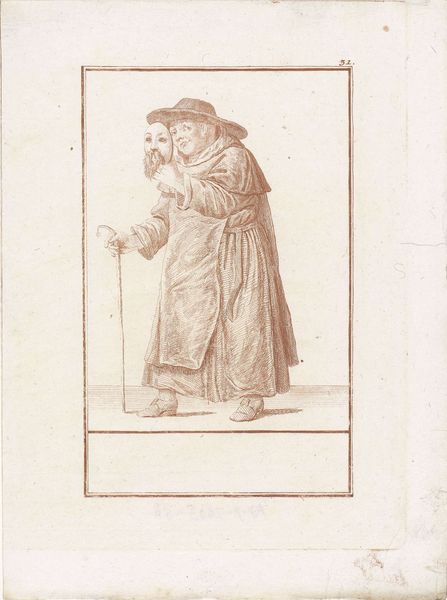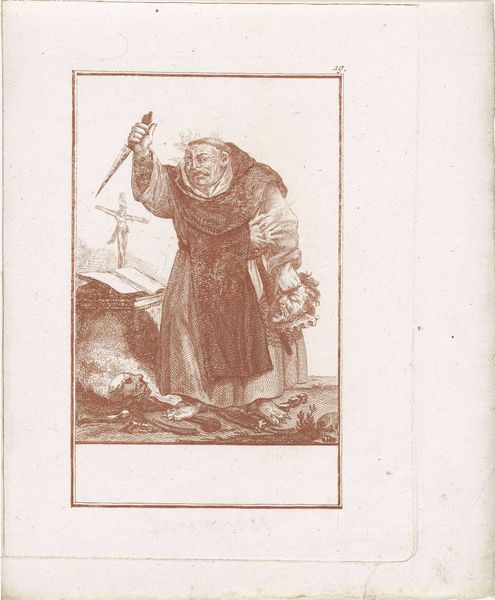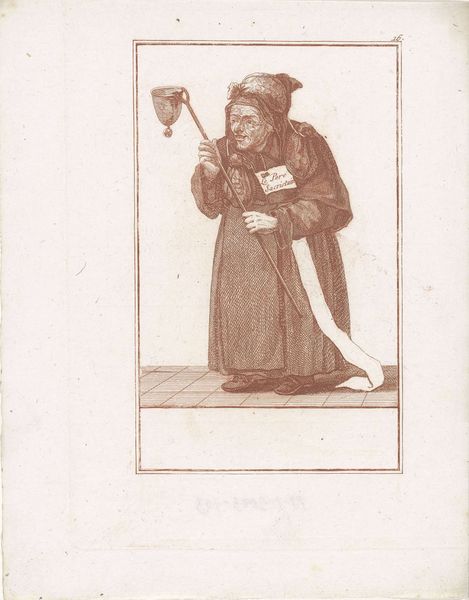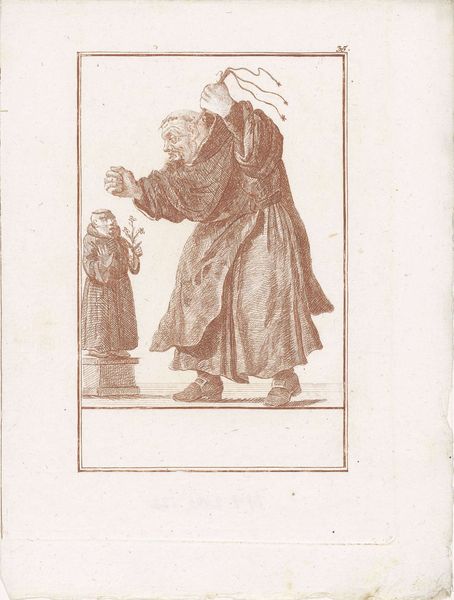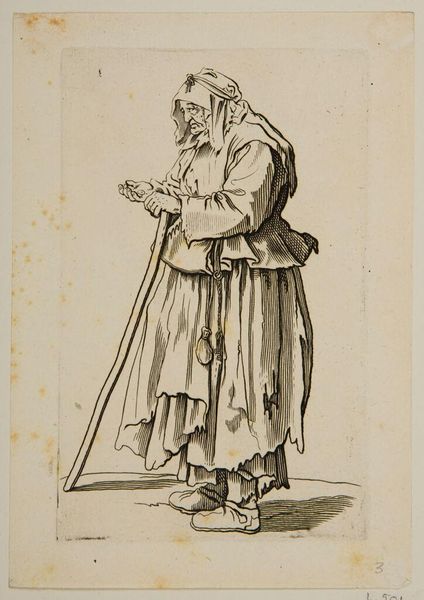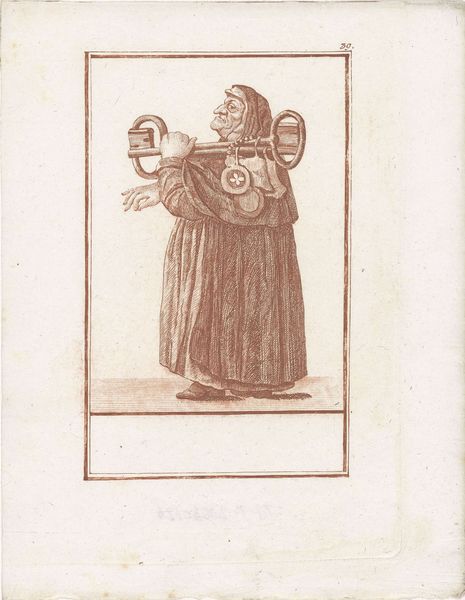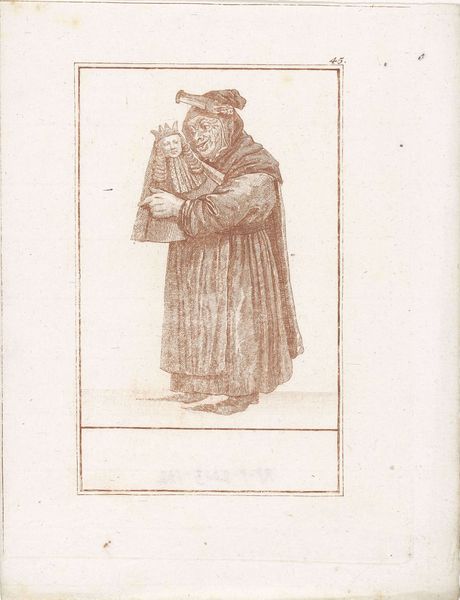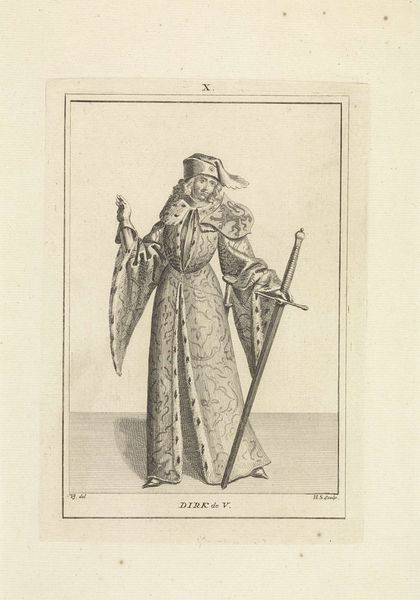
print, engraving
#
portrait
#
baroque
# print
#
old engraving style
#
figuration
#
genre-painting
#
history-painting
#
engraving
Dimensions: height 231 mm, width 180 mm
Copyright: Rijks Museum: Open Domain
Curator: Here we have Jacob Gole’s “Monnik met gesel en wijwaterkwast,” or “Monk with a whip and aspergillum,” created in 1724. It’s a striking engraving. Editor: My first impression is the peculiar juxtaposition of the comical and the macabre. The monk seems almost jovial, yet he’s carrying instruments of penance, and look—his rosary features a skull. Curator: Right. Gole, who was known for his skill with the burin, printed this on laid paper with a chain line—it's very typical of the period. I’m interested in how the lines create such texture, suggesting the folds in his robes, the roughness of the whip. What sort of labor was required to create such sharp detail through that meticulous production? Editor: That sharp detail really throws into relief the paradox of religious power. What's intriguing here is the representation of the monastic figure and what it signifies. Is it a satirical comment on the excesses of the church or perhaps a reflection on the human condition through a class lens, grappling with morality and mortality? Look at the skull. Look at how large his belly appears! It is so strange. Curator: Interesting that you mentioned class! These types of engravings were distributed in multiples to all types of social class and were very inexpensive. Gole was primarily working for the free market to depict an archetype of its time, like images that became symbols during Dutch Golden Age. The way those visual tropes affected class perceptions could also change markets. Editor: I hadn't considered the reach that engraving would have as a format, nor Gole’s audience and role. Now that changes how I see it entirely. But also the question still stands - is it commentary? And of what nature? Curator: These prints definitely were items to decorate interiors within bourgeoise families but that brings even more complex possibilities. What would they feel? The image does feel familiar because those symbolisms have been over exploited by other artist afterwards! Editor: Yes, thinking about the role the Church played in Dutch society at the time really changes everything. Thank you. Curator: A real glimpse into the methods of art production within the culture that was the Dutch Golden Age, in both practical and symbolical sense.
Comments
No comments
Be the first to comment and join the conversation on the ultimate creative platform.

